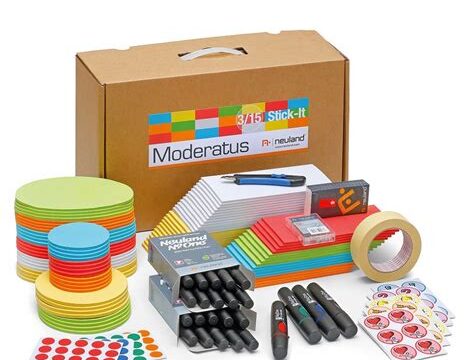Empower your workshop with targeted themes, audience needs, educational materials, interactive aids, visual presentations, hands-on supplies, practical exercise resources, and technology implementation.
Understanding the Workshop Theme
When organizing a workshop, the first vital step is understanding the workshop theme. This involves gaining a clear understanding of the main focus and objectives of the workshop. By identifying the theme, you can better plan and structure the content and activities to align with the overall goal of the event. This also helps in ensuring that all the workshop materials and resources are relevant and contribute to the overall theme.
Furthermore, understanding the workshop theme allows you to tailor the content and materials to the specific needs and interests of the target audience. Whether it is a professional development workshop, a skill-building session, or a creative arts event, the theme sets the tone for the entire workshop and helps in guiding the selection of suitable materials and resources.
By incorporating the workshop theme into the planning and preparation process, you can effectively engage the participants and create a cohesive and meaningful learning experience. Additionally, it enables you to communicate the purpose and objectives of the workshop clearly to the attendees, ensuring that they grasp the relevance of the materials and resources being utilized.
Identifying Target Audience Needs
Identifying the target audience needs is a crucial step in planning a successful workshop. It involves understanding the demographics, preferences, and learning styles of the individuals who will be attending the event. By gaining insights into their specific requirements, you can tailor your content and activities to ensure maximum engagement and comprehension.
One effective way to identify the needs of your target audience is by conducting surveys or interviews. This allows you to gather valuable feedback and input directly from the participants, giving you a better understanding of their expectations and objectives. Additionally, analyzing past workshop evaluations and feedback can provide valuable insights into the areas that require improvement or further attention.
Another important aspect of identifying audience needs is being mindful of the diverse backgrounds and experiences of the attendees. By recognizing and addressing these differences, you can ensure that your workshop content is inclusive and relevant to all participants, fostering a more engaging and impactful learning experience.
Selecting Relevant Educational Materials
When it comes to organizing a workshop, one of the most important aspects is selecting the relevant educational materials that will help your audience learn effectively. This task involves identifying the specific needs and requirements of your target audience and finding the materials that will address those needs.
Another important aspect of selecting relevant educational materials is ensuring that they are up-to-date and accurate. This may involve researching the latest trends and developments in the field and finding materials that reflect these changes. It’s also crucial to consider the learning styles and preferences of the audience, as well as any cultural or language considerations that may affect their ability to engage with the materials.
Lastly, selecting relevant educational materials also involves considering the format and delivery method of the materials. Whether it’s through handouts, presentations, or interactive exercises, the chosen materials should be able to effectively convey the necessary information and engage the audience in a way that enhances their learning experience.
Sourcing Interactive Learning Aids
When it comes to creating a successful workshop, interactive learning aids are essential in engaging the participants and making the learning experience more effective. Interactive learning aids can range from simple props and tools to advanced technology, and sourcing the right aids can make a significant impact on the workshop’s effectiveness.
One important factor to consider when sourcing interactive learning aids is the target audience and their specific learning needs. Different age groups, educational backgrounds, and interests will require different aids to keep them engaged and enhance their learning experience. Understanding the audience’s needs is crucial in selecting the most relevant interactive learning aids for the workshop.
Another consideration when sourcing interactive learning aids is the availability and accessibility of the materials. Whether it’s physical props, software, or online resources, it’s important to ensure that the aids are easily accessible and feasible for the workshop environment. Additionally, considering the budget and resources available is important in selecting the most practical and effective interactive learning aids for the event.
Curating Engaging Visual Presentations
When it comes to creating engaging visual presentations for your workshops, it’s important to consider the needs and preferences of your audience. By curating and selecting relevant educational materials that are visually appealing and easy to understand, you can ensure that your workshop participants are actively engaged and able to effectively absorb the information being presented.
One key aspect of curating engaging visual presentations is to consider the various learning styles of your audience. Some people may learn best through visual aids such as diagrams, charts, and infographics, while others may prefer videos or animations that illustrate concepts and ideas. By catering to a variety of visual learning preferences, you can create a more inclusive and effective workshop environment.
Additionally, utilizing interactive learning aids such as quizzes, polls, and hands-on activities within your visual presentations can help to keep participants engaged and actively participating in the learning process. By incorporating technology and interactive elements into your visual materials, you can create a dynamic and immersive learning experience that captures the attention and interest of your audience.
Choosing Hands-On Demonstration Supplies
When organizing a workshop or event that involves hands-on demonstrations, it is crucial to carefully select the right supplies to ensure that participants can fully engage and learn from the experience. The supplies chosen should be not only educational, but also safe and easy to use for everyone involved.
One important consideration when choosing hands-on demonstration supplies is the age and skill level of the participants. For example, if the workshop is geared towards children, the supplies should be age-appropriate and easy for small hands to manipulate. On the other hand, if the event is for adults with advanced skills, more complex and specialized supplies may be necessary.
Additionally, it is important to consider the learning objectives of the workshop when choosing hands-on demonstration supplies. The supplies should align with the specific skills or knowledge that participants are expected to gain from the demonstrations. Whether it’s a cooking class, a science experiment, or a craft workshop, the supplies should support the learning goals and provide a hands-on experience that enhances the educational content.
Acquiring Practical Exercise Resources
Acquiring Practical Exercise Resources
When it comes to organizing a successful workshop, acquiring practical exercise resources is crucial for engaging your participants and delivering a hands-on learning experience. These resources can include anything from props, equipment, and materials that are essential for carrying out practical exercises and activities. It’s important to carefully consider the specific needs and goals of your workshop before sourcing these resources to ensure that they are relevant and effective in meeting the learning objectives.
One of the key factors to consider when acquiring practical exercise resources is the quality and durability of the materials. As these resources will be heavily used during the workshop, it’s important to invest in high-quality supplies that can withstand frequent handling and use. Additionally, considering the safety of the materials is also essential, especially if the practical exercises involve physical activities or experiments. Ensuring that the resources are safe for use can help prevent accidents or injuries during the workshop.
Another important aspect to consider is the accessibility and availability of the practical exercise resources. It’s important to ensure that the materials and equipment needed for the practical exercises are easily accessible and readily available for use. This may involve coordinating with suppliers, renting equipment, or even considering alternative resources that are more easily obtainable. Having a plan in place for acquiring and organizing these resources can help streamline the logistics of the workshop and ensure that everything runs smoothly.
Implementing Technology for Workshops
Implementing Technology for Workshops
When it comes to organizing a workshop, the use of technology can greatly enhance the learning experience for participants. Whether it’s using online platforms for virtual workshops or integrating interactive tools and software into in-person sessions, the proper use of technology can make workshops more engaging and effective.
One way to implement technology in workshops is by leveraging online learning management systems that allow for interactive presentations, quizzes, and discussions. These platforms can provide a centralized location for workshop materials and resources, making it easier for participants to access and engage with the content both during and after the workshop.
Additionally, the use of audiovisual equipment such as projectors, screens, and sound systems can enhance the delivery of workshop material, making it easier for participants to absorb and understand the information being presented. This can be particularly useful for workshops that involve visual presentations, demonstrations, or hands-on activities.
Frequently Asked Questions
What are the essential tools for workshop materials?
Essential tools for workshop materials include presentation software, whiteboards, markers, projector, laptop, and name tags.
How can I gather the necessary resources for a workshop?
You can gather necessary resources for a workshop by creating a checklist, contacting vendors for rentals, and utilizing online resources for templates and materials.
What are some creative ways to use workshop materials?
You can use workshop materials creatively by incorporating interactive activities, using props and visual aids, and utilizing technology for engaging presentations.
Where can I find affordable workshop materials?
You can find affordable workshop materials at local office supply stores, online marketplaces, and by utilizing discounts or bulk purchases.
How important is it to customize workshop materials for specific events?
Customizing workshop materials for specific events is important as it enhances relevance, engagement, and helps achieve the desired learning outcomes.
What are some tips for organizing workshop materials effectively?
Tips for organizing workshop materials effectively include using storage containers, labeling everything, creating a designated workspace, and keeping an inventory of items.
What role do workshop materials play in the overall success of an event?
Workshop materials play a crucial role in the overall success of an event by facilitating learning, engagement, and providing necessary resources for presenters and participants.





